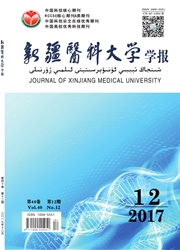

 中文摘要:
中文摘要:
目的:分析新疆农村地区不同民族不孕症患者中医体质类型。方法:取具有代表农村汉族、维吾尔族、哈萨克族地区筛查出的477例不孕症患者作为病例组、有生育力的正常人群作为对照研究对象,依据《中医体质分类与判定》方法辨析体质类型,比较不同民族间不孕症的体质差异。结果:与对照组比较,病例组阳虚质、痰湿质、血瘀质、气郁质明显增多而平和质明显减少,差异有统计学意义(P〈0.05);汉族不孕症气虚质明显多于维吾尔族和哈萨克族,差异有统计学意义(P〈0.05);维吾尔族不孕症的痰湿质明显多于汉族和哈萨克族,差异有统计学意义(P〈0.05);哈萨克族阳虚质和血瘀质明显多于维吾尔族和汉族,差异有统计学意义(P〈0.05)。结论:新疆农村地区不同民族不孕症患者具有不同体质分布特点,同时具有易感体质共性。
 英文摘要:
英文摘要:
Objective: To understand the infertility constitution of different nationality groups in Xinjiang rural areas in Chinese Medicine Theory. Methods: 477 cases of infertility patients in rural Han,Uyghur,Kazak regions were considered as the case group and the fertility population were considered as control group. According to the TCM constitution theory in Traditional Chinese constitution classification and determination,the constitution infertility people of different nationalities are compared. Results: Compared with the control group,the number of Yang-deficiency constitution,phlegm-wetness constitution,blood-stasis constitution and Qi-stagnation constitution in the case group increased significantly,while the number of normal constitution in the case group significantly decreased( P〈0. 05). The number of Qi-deficiency constitution of Han infertility patients was significantly more than that of Uighur and Kazak patients( P〈0. 05). The number of Phlegm-wetness constitution patients of Uighur people was significantly more than that of Han and Kazak( P〈0. 05). The number of Yang-deficiency constitution and blood-stasis constitution of Kazakh infertility patients was significantly more than that of Uighur and Han( P〈0. 05). Conclusion: Infertility patients in different nationality groups in Xinjiang rural areas have different TCM constitutions and there exists some common characteristics in the same nationality group.
 同期刊论文项目
同期刊论文项目
 同项目期刊论文
同项目期刊论文
 期刊信息
期刊信息
